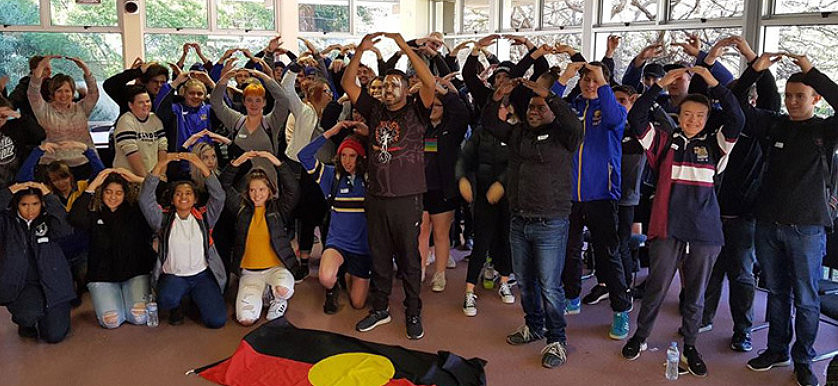Aborigines’ life equality – Closing the gap for 11 years

Aboriginal and Torres Strait Islander people are continuously suffering from poor health conditions, which have become an ever-present challenge for the Australian government.
Aboriginal and Torres Strait Islander people, commonly called Indigenous Australians, live in different parts of Australia, comprising hundreds of groups with their own distinct set of languages, histories and cultural traditions.
Their poor health status and lower life expectancies have been the two major issues that brought tremendous criticism towards the Australian government’s inability to improve their wellbeing.
A large proportion of indigenous people often die at much younger ages compared to other Australians, due to worse health conditions.
Through Closing the Gap – an inclusive program, initiated by the Australian government, working together with Indigenous people to address their disadvantages in areas such as health, education and employment.
As a result, a number of measurable indicators have been set by the Council of Australian Governments (COAG) to monitor progress against certain targets.
There are seven major such targets, set by the COAG, with several KPIs assigned for each one. These are as follows:
- Halve the gap in child mortality rate by 2018
- Close the gap in school attendance by 2018
- Reduce the gap in life expectancy by 2030
- Halve the gap in reading and numeracy in 2018
- Halve the gap in employment disparity by 2018
- Halve the gap in Year 12 attainment or equivalent by 2020
- Close the gap in early childhood education attendance
Here are a few examples of Key Performance Indicators that were assigned for each of these targets:
- % Child mortality rates: Measures the percentage of mortality of Indigenous children, under five, within a decade (by 2018).
- % Immunization rates: Measures the percentage of population receiving vaccines for immunization, from the total population.
- % Student attendance rates: Measures the rate of students regularly attending school within the specific time period.
- % Employment to population rate: Measures the percentage of Indigenous employees, from the total number of Indigenous people.
- % Indigenous workforce: Measures the percentage of the workforce that is Indigenous, from the total number of Australian workers.
- # Years life expectancy at birth estimates: Measures the estimated number of years that people born in the same year are expected to live, if the current mortality rates remain constant.
- $ Budget provided annually for Indigenous alcoholic detoxification and other drug treatment services.
However, the latest report sadly confirmed that only two of the seven targets showed progress; early childhood education and Year 12 attainment figures.
What lessons to draw?
Prof. Nicholas Biddle, from the Australian National University, identified four lessons to learn from measuring progress against the aforementioned targets.
- Some targets are easier to achieve than others
It appears that targets which are successfully achieved are those which the government has direct control over the matter. On the one hand, increasing the proportion of Indigenous Australians completing year 12 can be achieved by creating incentives to combat school abandonment, while state and local governments can adjust the education attainment age.
On the other hand, another target like improving employment outcomes is difficult to achieve even with governmental intervention. This is due to the fact that discrimination among employers is not easily identified, and it becomes an even greater issue when you consider the fact that jobs need to match the skills and habitation areas of Indigenous Australians.
- The life-expectancy measurement is unpredictable
More recently-identified Aboriginal and/or Torres Strait Islanders are claimed to have better outcomes across all aspects measured by the government, compared to previously-identified Indigenous Australians.
Such escalation creates biases when measuring, making it appear like there is quicker progress than there actually is. It indicates that different generations of Indigenous Australians present much greater gaps in life-expectancy and health quality.
- Target on-track one year, off-track the next year
Given that the reporting cycle is carried out on a yearly basis, the government will have to face yearly fluctuations in their data. For example, the indigenous child mortality target is difficult to measure, due to the declining rate of child mortality among non-indigenous people, taking place at a faster rate.
Hence, the target is not currently on track, despite having decreased by 10% in the last decade.
- Indigenous Australians in different areas have different needs
The latest report shows that many outcomes appear to be worse in remote areas, compared to non-remote areas of Australia. The government often lumps together the needs of Indigenous Australians – those living in the city and those who live in rural areas, making it much more difficult to come up with practical solutions for everyone.
As a final parting thought, in my opinion, the government should better manage their measurement process, as the current fashion of gauging targets is resulting in middling results in terms of quality of life improvements, for Indigenous Australians.
They would have to employ a few KPI distinction & selection criteria, so that their next yearly report might paint a more accurate picture of the actual ”closing of the gap”.
Image sources:

Tags: Government performance, KPI, Performance in Australia






